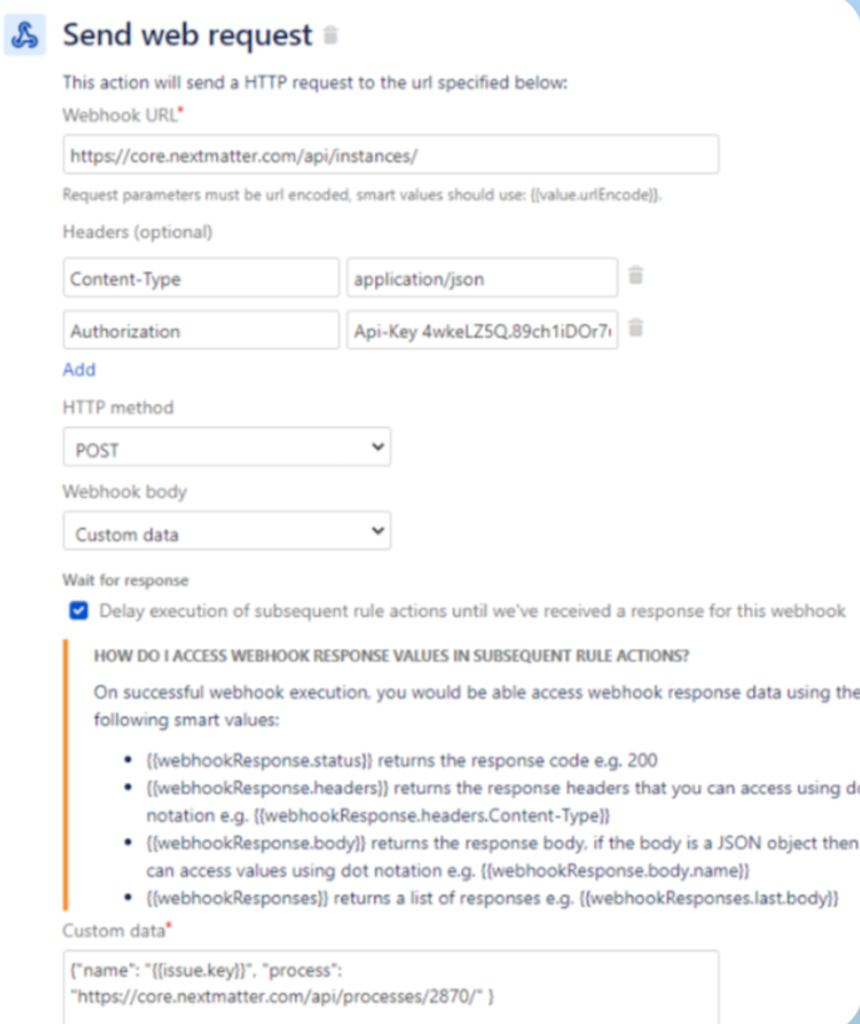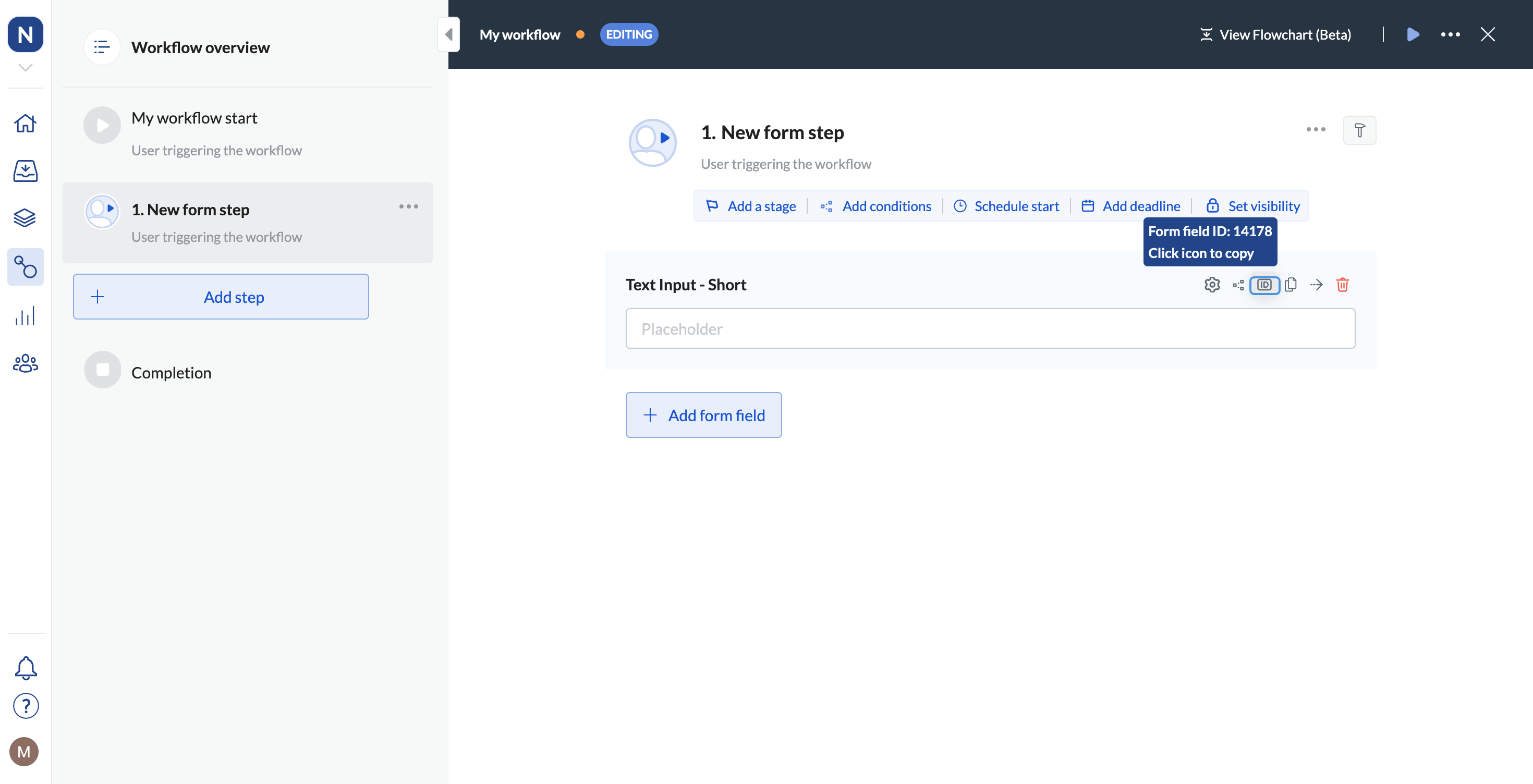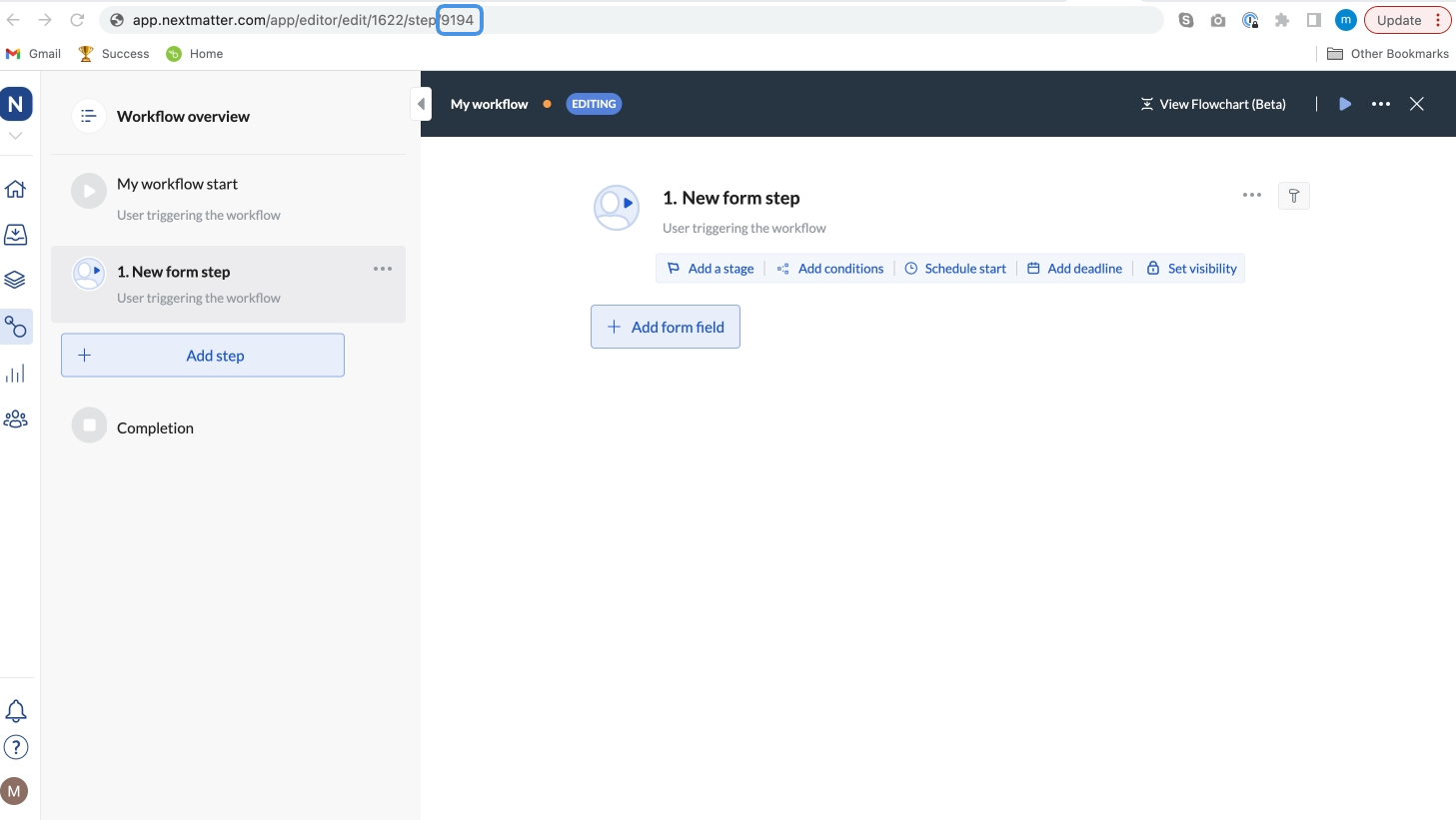Create a Jira issue from workflow
Before you begin
- Make sure to have the key of your Jira project at hand. The project key is the prefix of the issue number. For example, if your issue number is
JRA-123, theJRAportion of the issue number is the project key.
Create an issue in Jira
- In Jira go to Settings > Atlassian Account Settings > Security > Create and Manage API tokens.
- Create your Jira token and copy it to the clipboard.
-
You need the token to be base64-encoded (in the format of
useremail:api_token). Base64-encode the string by using a tool like https://base64encode.org. Before encoding your string will look like the following:[email protected]:12345 - In Next Matter select the workflow that should integrate with Jira, and add a new integration step.
-
Click Settings and enter the following details:
- Method: POST
-
URL:
https://JIRA_SUBDOMAIN.atlassian.net/rest/api/latest/issue/ - Headers: Content-Type: application/json
-
Headers: Authorization:
Basic JIRA_API_KEY - Body might look like the following:
Start a workflow from Jira Service Desk ticket or Jira issue
Before you begin
- Make sure Next Matter is allowlisted in Jira. See Jira documentation.
- Note down the ID of the workflow that will be triggered with the first workflow. You can get the ID by clicking the workflow and copying the number from the URL in your browser.

Start a workflow from Jira Service Desk
- In Jira Service Desk, go to Project Settings > Automation.
- Click Create rule.
- Define the When trigger as Issue created.
- Add a Then action and define it as Send web request.
-
In the Send web request section, enter the following details:

-
Webhook URL:
https://core.nextmatter.com/api/instances/ - Headers: Content-Type: application/json
-
Headers: Authorizations
API-Key NEXT_MATTER_API_KEY - Method: POST
- Webhook body: Custom data
- Custom data:
-
Webhook URL:
(Optional) Push additional data from Jira to the first step in Next Matter workflow
If you want to create a workflow with some Jira data in it, go back to the automation rule you created in Jira, and change the following:- In Jira, automation settings add an And to your rule. Define the And as an action to complete a subsequent step.
- Configure the following attributes for the And:
-
URL:
https://core.nextmatter.com/api/instances/{{webhookResponse.body.id}}/complete_step/ - Headers: Content-Type: application/json
-
Headers: Authorizations
API-Key NEXT_MATTER_API_KEY - Method: POST
- Webhook body: Custom data
-
Custom data - you can map Jira issue information onto corresponding Next Matter actions. Next Matter actions can be identified with the IDs displayed in the editor. The payload might look like the following
Where is the form field ID?
- In your left-hand navigation, click the Workflows icon.
- Hover over the follow-up workflow and click on the menu icon.
- Click Workflow.
- Click the step to which you’d like to send data.
- Click the ID icon for the field you want to copy data to.
-
Copy Form field ID.

Where is the step ID?
- In your left-hand navigation, click the Workflows icon.
- Hover over the follow-up workflow and click on the menu icon.
- Click Edit workflow.
- Click the step to which you’d like to send data.
-
Copy the step ID. It’s the last number in the URL you see in your browser.


